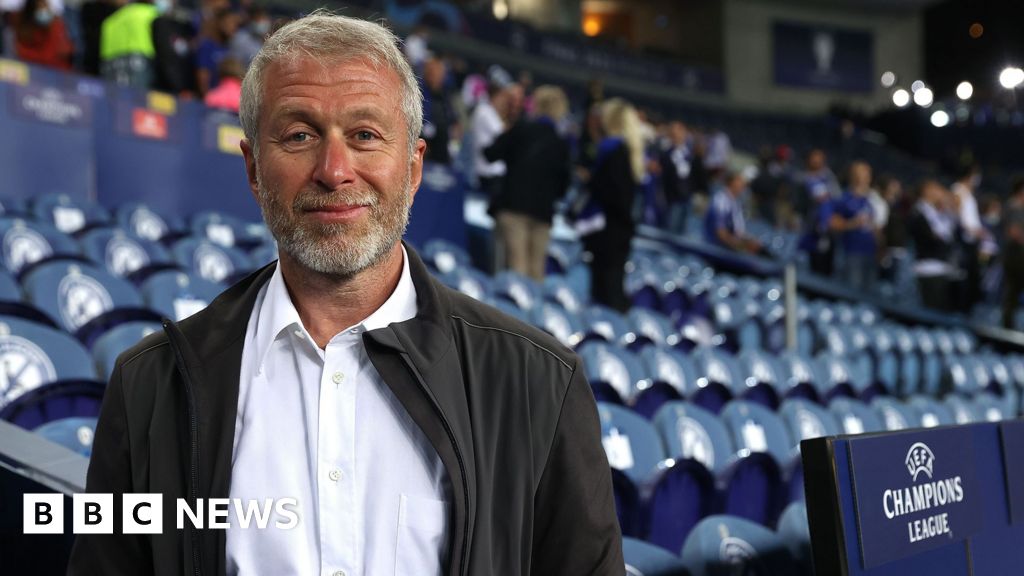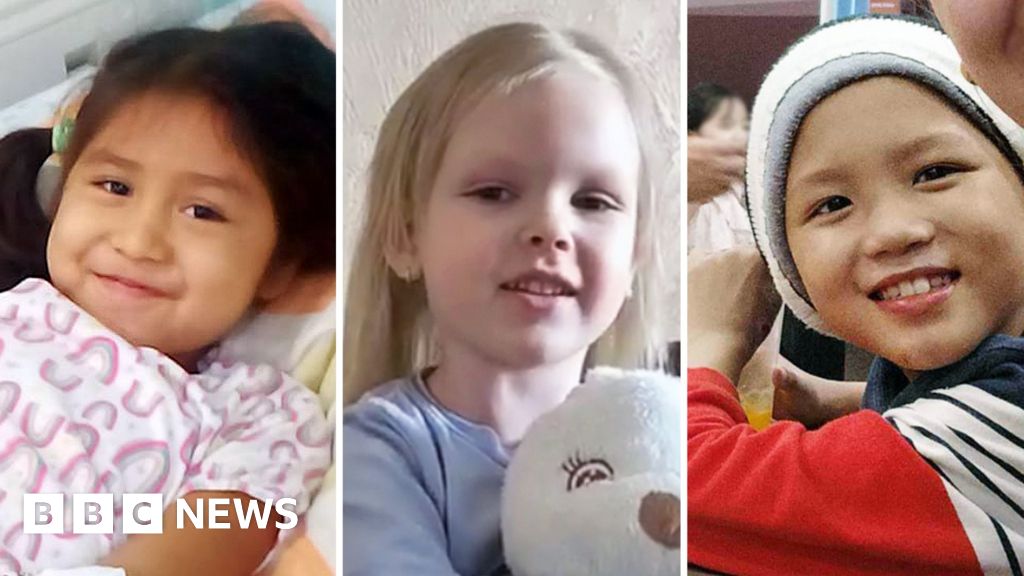
IVF in zoos ‘could help wild population’
- Science
- July 7, 2024
- No Comment
- 116
By Rebecca Morelle, Science Editor • Alison Francis, BBC News Science
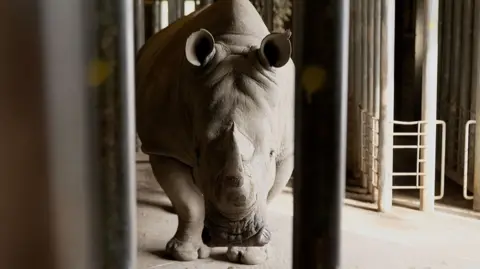 BBC/Kevin Church
BBC/Kevin ChurchCollecting eggs from a two tonne rhino is far from easy – but the procedure is being carried out in zoos across Europe in a bid to help the wild population.
The hope is that cutting-edge fertility technology could boost the genetic diversity of southern white rhinos in Africa.
The species was almost extinct, plummeting to a few dozen rhinos – so the animals are all descended from this tiny group.
Scientists believe rhinos in zoos, which have more genetic diversity because they are carefully cross bred, could widen the gene pool with the help of IVF.
It’s technology that has seen a recent breakthrough: in January, researchers announced that they had achieved the world’s first rhino IVF pregnancy.
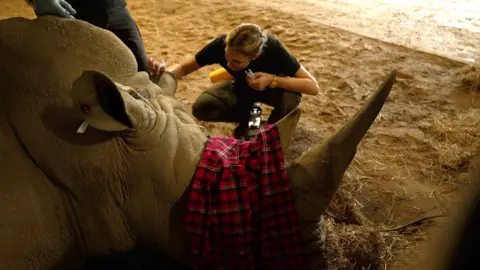 BBC/Kevin Church
BBC/Kevin ChurchOne of the animals taking part in the southern white zoo project is 22-year-old Zanta from Dublin Zoo in Ireland.
“Zanta has wonderful genetics that are worth preserving, but we know from a previous reproductive assessment that she can’t breed,” says Frank O’Sullivan, a vet at the zoo.
“The main reason we want to do the procedure is to bypass that, harvest her eggs and then they’ll be fertilised. The great thing is Zanta will be represented in future generations of rhinos.”
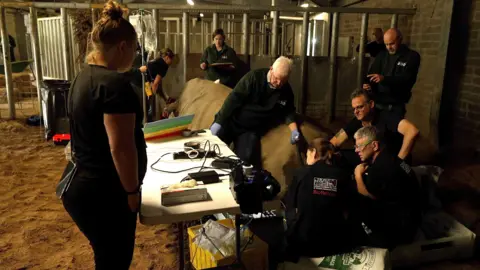 BBC/Kevin Church
BBC/Kevin ChurchA team of fertility specialists from the Leibniz Institute for Zoo and Wildlife Research in Germany has flown to Ireland to carry out the procedure.
Zanta is anaesthetized with a dart, then once she’s fully sedated the scientists get to work.
Amidst the regular beeps of the equipment monitoring Zanta’s vital signs, the researchers cluster around a screen that’s showing an ultrasound of the rhino’s ovaries.
She’s been given special hormone injections to help her produce eggs. The researchers are able to locate them inside follicles, small sacs of fluid, that appear as black circles on the screen.
Using an ultra-fine needle, and a great deal of precision, they are able to extract the eggs.
It’s taken the team a long time to develop this technology.
The IVF pregnancy announced in January was in southern whites – with the team successfully transferring a lab-created rhino embryo into a surrogate mother.
A calf was never born because the mother died from an unrelated bacterial infection early in the pregnancy. However, the scientists believe the pregnancy shows the technique is viable.
Their ultimate aim is to repeat this with the southern white rhino’s all but extinct cousin – the northern white rhino – for a project called Biorescue. There are only two of these animals left on the planet – both of them females.
But the scientists believe the reproductive advances they’ve made could also help with the southern white rhino’s genetic problems.
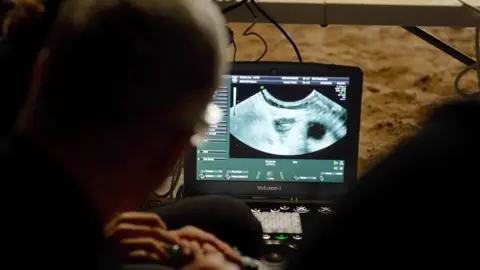 BBC/Kevin Church
BBC/Kevin ChurchToday southern whites number in their thousands, but it wasn’t always that way.
At the end of the 19th Century, the species was almost wiped out through hunting and land clearance. Some estimates suggest there were as few as 20 animals left.
The animals have slowly bounced back and now they are classified as near threatened, but starting off from this very small group has left them with a lack of genetic diversity.
This puts them at risk, says Prof Thomas Hildebrandt, the director of reproduction at Leibniz IZW.
“If you have a very narrow gene pool, a virus, for example, can jump from one individual to the other because each individual is the same and the immune system acts like the same,” he explained.
Southern whites in zoos, on the other hand, have more diversity because of the way their breeding is carefully planned.
“We’re trying to apply this new technology to rescue Zanta’s genes and bring them back to Africa, so that we have a wider gene pool for the future,” he says.
 BBC/Kevin Church
BBC/Kevin ChurchIn a makeshift lab next to the rhino enclosure, the scientists peer intently into a microscope to assess what they’ve collected.
Susanne Holtze, part of the Leibniz team, says that they’ve managed to harvest four eggs.
Rhino IVF is still in its infancy – a calf has not yet been born from the technique – but the team is building a store of embryos made with eggs and sperm collected from across Europe and the hope is that they can one day be implanted into surrogates.
“It’s a lot of effort and in the end we actually come home with a few cells. But these cells have the potential to become embryos and to form a new rhino – a huge two tonne animal, so it’s worth it,” Dr Holtze said.
 BBC/Kevin Church
BBC/Kevin ChurchBack in the enclosure, not long after the procedure has been completed, Zanta wakes up.
She’s a little unsteady on her feet at first, but once everyone is sure she’s OK, she heads outside. Her keeper calls her name and she soon strolls over for a gentle scratch behind her ears.
Although she doesn’t know it, the few eggs that she’s donated could make a big difference, helping the survival of future generations of southern white rhinos.
Photos by Kevin Church
#IVF #zoos #wild #population



